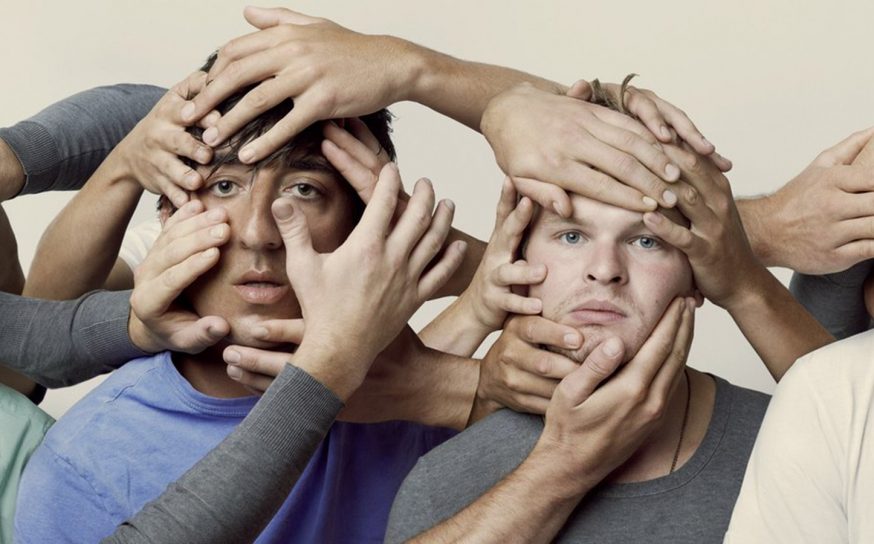What a Trip: Remembering the 1967 Summer of Love
The de Young Museum commemorates the 50th anniversary of a San Francisco cultural movement.
-
CategoryArts + Culture
In the mid-1960s, artists, activists, writers, and musicians converged on Haight-Ashbury with hopes of creating a new social paradigm. By 1967, the neighborhood would attract as many as 100,000 young people from all over the nation. The neighborhood became ground zero for their activities, and nearby Golden Gate Park their playground.
The period is marked by groundbreaking developments in art, fashion, music and politics. Local bands such as Jefferson Airplane and the Grateful Dead were the progenitors of what would become known as the “San Francisco Sound,” music that found its visual counterpart in creative industries that sprang up throughout the region. Rock-poster artists such as Rick Griffin, Alton Kelley, Victor Moscoso, Stanley Mouse, and Wes Wilson generated an exciting array of distinctive works featuring distorted hand-lettering and vibrating colors, while wildly creative light shows, such as those by Bill Ham and Ben Van Meter, served as expressions of the new psychedelic impulse.
Distinctive codes of dress also set members of the Bay Area counterculture apart from mainstream America. Local designers began to create fantastic looks using a range of techniques and materials, including leatherwork, hand-painting, knitting and crotchet, embroidery, repurposed denim, and tie-dye. These innovators included Birgitta Bjerke, aka 100% Birgitta; Mickey McGowan, aka the Apple Cobbler; Burray Olson; and Jeanne Rose.
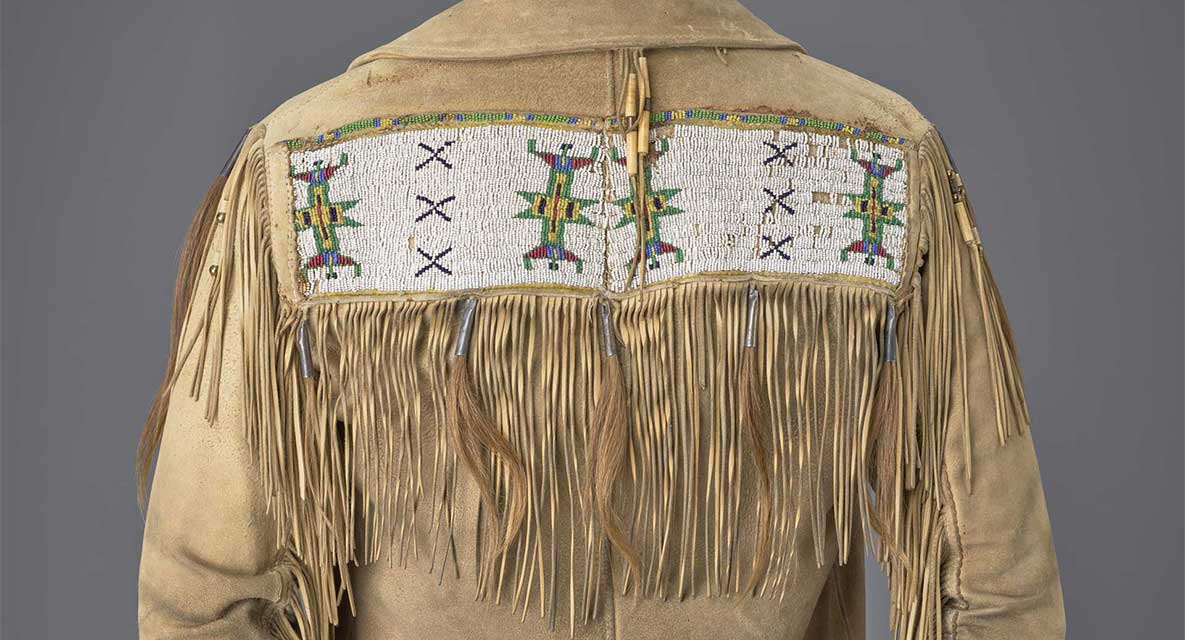


The Fine Arts Museums of San Francisco present The Summer of Love Experience: Art, Fashion, and Rock & Roll, an exhilarating exhibition of iconic rock posters, photographs, interactive music and light shows, costumes and textiles, ephemera, and avant-garde films at the de Young. A 50th anniversary celebration of the adventurous and colorful counterculture that blossomed in the years surrounding the legendary San Francisco summer of 1967, the exhibition presents more than 400 significant cultural artifacts of the time, including almost 150 objects from the Fine Arts Museums’ extensive permanent holdings, supplemented by key, iconic loans.
“The 1967 Summer of Love was a defining moment in San Francisco’s history,” states Max Hollein, director and CEO of the Fine Arts Museums of San Francisco. “With the de Young’s proximity to the Haight-Ashbury district, our exhibition is the cornerstone of a city-wide celebration. The work created during this period remains a significant legacy and we are uniquely positioned to present this story in all of its controversial glory.”
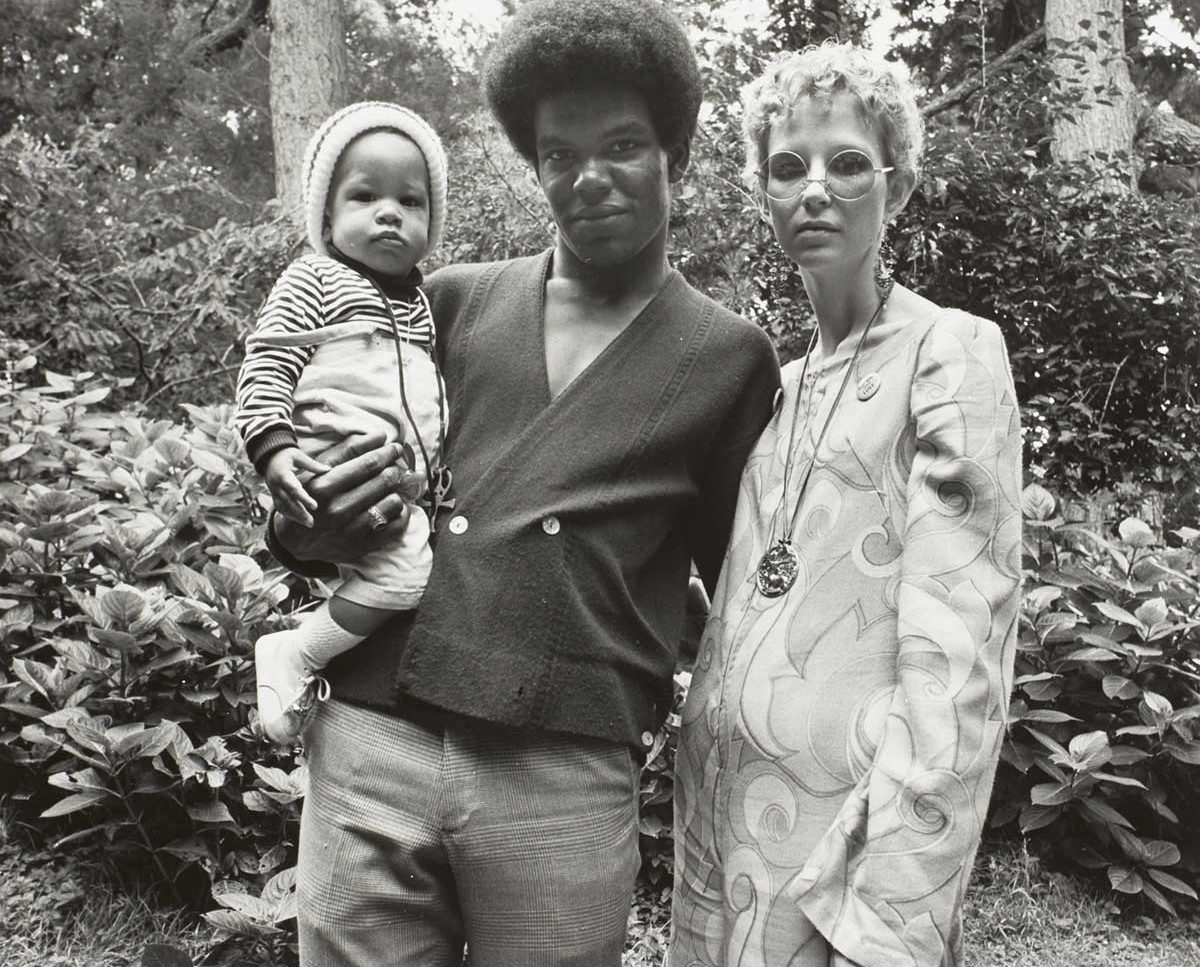
"Couple with Child, Golden Gate Park, San Francisco," 1968. Gelatin silver print. Courtesy of Joseph Bellows Gallery. Image Courtesy of the Fine Arts Museums of San Francisco
“Our collections have always reflected our interest and respect for this period in Bay Area history,” notes Jill D’Alessandro, curator of textile and costume arts at the Fine Arts Museums of San Francisco. “The scope and scholarship of this exhibition weave the many threads of this story together to create a new context and narrative that is both reverential and refreshing.”
The Summer of Love Experience: Art, Fashion, and Rock & Roll commemorates an “only in San Francisco” social and aesthetic movement, and reminds museum visitors that in a time of international upheaval, the city played a vital role in changing society and amplifying the pulse of the nation. The exhibition is organized by Jill D’Alessandro and Colleen Terry, assistant curator for the Achenbach Foundation of Graphic Arts at the Fine Arts Museums of San Francisco, with contributions by Julian Cox, chief curator and founding curator of photography at the Fine Arts Museums of San Francisco, and runs through August 20 at the de Young.


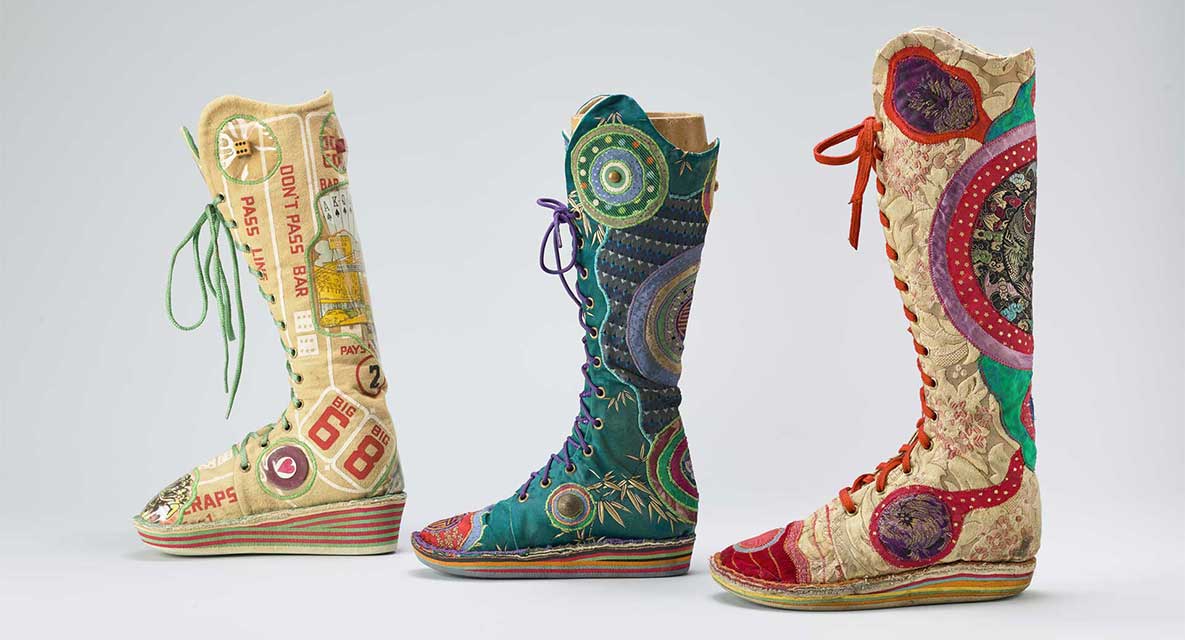
IN DETAIL
The exhibition opens with a look at the Trips Festival of January 21–23, 1966, providing background and context into this creative period. Co-organized by American writers Stewart Brand and Ken Kesey, this multimedia extravaganza—complete with liquid light and slide shows, film projections, electronic sounds, and more—was the first event to gather members of the counterculture in a significant way.
The exhibition goes on to explore the role of the Haight-Ashbury neighborhood and Golden Gate Park, both sites of pivotal gatherings such as the first Human Be-In of January 1967 and groundbreaking political street theater by the Diggers. Photographs by Herb Greene, Jim Marshall, Elaine Mayes, and Leland Rice showcase the spirit of the time, as do the handwork of Alexandra Jacopetti Hart and the exquisite denim creations of Love, Melody—the label by Melody Sabatasso. The Haight was home to the underground San Francisco Oracle newspaper, social service organizations like the Haight-Ashbury Free Medical Clinic, and head shops, poster shops, and boutiques that catered to a youthful clientele.
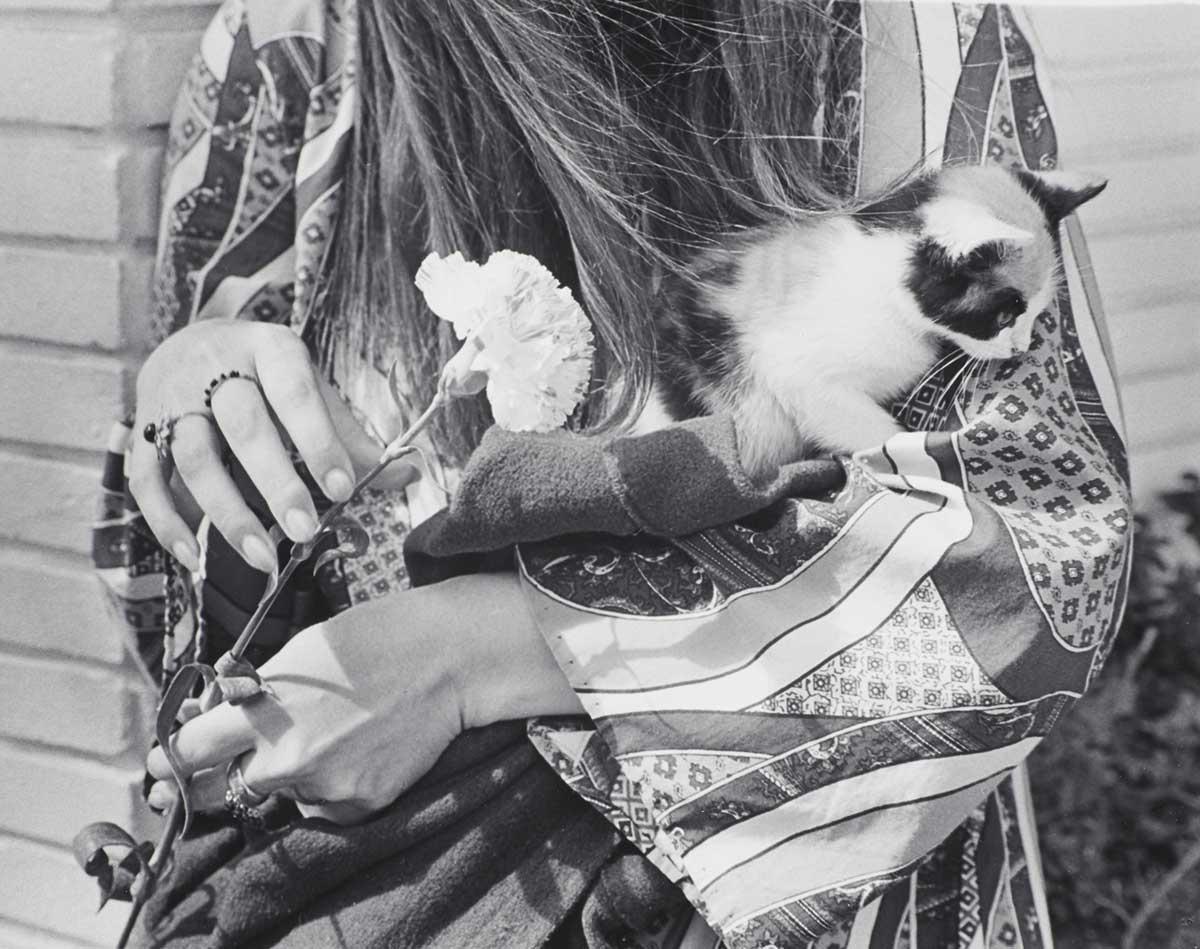
"All the Symbols of the Haight," 1967. Gelatin silver print. Lumière Gallery, Atlanta, and Robert A. Yellowlees Image Courtesy of the Fine Arts Museums of San Francisco
After exploring the place in which the counterculture germinated, the exhibition investigates the movement’s aesthetic content. Largely drawing upon San Francisco’s geographic location and colorful past, rock-poster artists including Griffin, Robert Fried, Stanley Mouse and others, and fashion designers such as Burray Olson and Jeanne Rose, layered stereotypical imagery of the American West alongside aesthetic styles borrowed from the Victorian era and Far Eastern cultures in their work, often in response to the city’s growing music industry.
“The Fine Arts Museums have long held a significant collection of posters, prints and documents from this period,” says Terry. “These works have been reproduced so broadly over the past 50 years that we lose sight of how startlingly original and inventive this work is—and how it defined, reflected and augmented the culture from which it emerged.”

At the Fillmore Auditorium, Avalon Ballroom, and other venues throughout the city, musical groups such as Big Brother and the Holding Company, the Grateful Dead, and Jefferson Airplane drew fancifully dressed crowds and, together with their fans, put on a show. A gallery devoted to the so-called San Francisco Sound highlights legendary San Francisco dance concerts, which were remarkable for their diversity of musical lineups and participatory nature. Light shows—whether liquid, as exemplified by the work of Ham, or multimedia, as achieved by Van Meter and Roger Hillyard’s North American Ibis Alchemical Company—covered musicians and concertgoers alike in projections. Light show commissions by Ham and Van Meter create immersive environments for museum visitors, offering a hint of the multisensory experience.
“The exhibition boldly recreates the multimedia paradigm that defined the aesthetic of the era,” adds Cox. “We are fortunate that these pioneering light show artists are still working here in the Bay Area, and we are thrilled to be able to include new and original works shaped by their vision.”
Participation was at the heart of San Francisco’s counterculture, and nowhere was this felt more strongly than in gatherings where likeminded people came together in support of social and political change. The exhibition concludes with artworks that reflect the movement’s ideological concerns, highlighting the intersecting strains of art and activism, such as photographs by Ruth-Marion Baruch, Pirkle Jones, and Stephen Shames that capture the Black Panthers’ intense commitment to community-led action.
Throughout the exhibition, the aesthetic legacy of this fecund period is striking, still reverberating 50 years later.
Monday Moods: “Friends & Relations”
Alt-pop vibes from emerging male singer/songwriters.
Grizzly Bear Says “Bye, Brooklyn,” and “Hello, Los Angeles”
After a needed break, the indie rock band is back with a new album, made in California.
For California Cannabis Travelers, the Sky’s NOT the Limit
If you plan on flying the friendly skies with marijuana and cannabis-infused products, there are a few things you should know.
Get the Latest Stories





